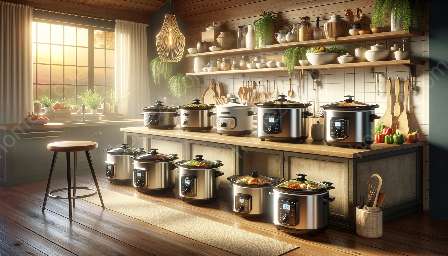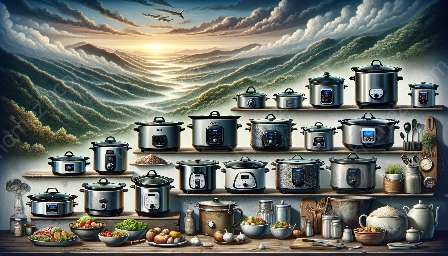Slow cookers are essential kitchen appliances, but sometimes they can encounter problems that lead to slow or inefficient cooking. In this comprehensive guide, we'll explore common slow cooker issues and provide solutions to keep your slow cooker running smoothly. Whether you're dealing with temperature inconsistencies or a malfunctioning timer, these troubleshooting tips will help you get your slow cooker back in working order.
Common Slow Cooker Issues
Before diving into the troubleshooting process, it's important to understand the common issues that slow cookers may experience. Here are some of the most prevalent problems:
- Temperature Inconsistencies: Your slow cooker may not be reaching the desired cooking temperature, leading to undercooked or overcooked meals.
- Timer Malfunction: The timer on your slow cooker may not be working correctly, resulting in unpredictable cooking times.
- Uneven Cooking: Certain spots in the slow cooker may be hotter or cooler than others, affecting the overall cooking performance.
- Slow Heating: Your slow cooker may take longer than usual to heat up, delaying the cooking process.
- Excessive Evaporation: If your slow cooker lid doesn't fit properly, it can lead to excessive evaporation and dried-out meals.
Troubleshooting Tips
Now that you know the common issues, let's explore troubleshooting tips for each problem:
Temperature Inconsistencies
If you're experiencing temperature inconsistencies, try the following:
- Check the slow cooker's power source and ensure it's properly plugged in.
- Use an external food thermometer to verify the internal temperature of the slow cooker.
- Inspect the slow cooker's heating element for signs of damage or wear and tear.
- Consider using a different slow cooker setting or adjusting the cooking time to account for temperature variations.
Timer Malfunction
When dealing with a malfunctioning timer, consider these troubleshooting steps:
- Reset the slow cooker's timer by turning it off and then on again.
- Test the timer with a short cooking cycle to see if it accurately shuts off at the designated time.
- Check for any debris or obstructions around the timer dial that may be affecting its function.
- If the timer is still not functioning, consider contacting the manufacturer for further assistance or repairs.
Uneven Cooking
To address uneven cooking in your slow cooker, try the following solutions:
- Stir the ingredients periodically during the cooking process to distribute heat evenly.
- Consider using a different slow cooker insert or vessel to ensure better heat distribution.
- Adjust the slow cooker's placement to ensure even heat distribution, avoiding direct contact with cold surfaces.
- Inspect the slow cooker's heating element and ensure it's functioning properly to provide consistent heat.
Slow Heating
If your slow cooker takes longer than usual to heat up, troubleshoot with the following steps:
- Verify that the slow cooker lid is properly sealed to prevent heat loss.
- Preheat the slow cooker on a high setting before adding ingredients to expedite the heating process.
- Ensure that the slow cooker's power source is delivering the necessary voltage for efficient heating.
- Consider replacing the slow cooker's heating element if it shows signs of deterioration or poor performance.
Excessive Evaporation
For problems related to excessive evaporation and dried-out meals, consider these troubleshooting measures:
- Check the slow cooker lid for a proper fit and consider using a silicone gasket or sealant to improve the seal.
- Reduce the cooking temperature or utilize a lower heat setting to minimize evaporation during the cooking process.
- Add additional moisture or liquid to the slow cooker to compensate for the evaporation and prevent dryness.
- Consider using a glass or transparent lid to monitor the cooking process and adjust for excessive evaporation as needed.
Regular Maintenance and Care
Aside from troubleshooting specific issues, it's essential to practice regular maintenance and care to keep your slow cooker in optimal condition. Here are some general tips to maintain your slow cooker:
- Clean the Interior: Regularly clean the interior of your slow cooker with a gentle detergent and warm water, ensuring that no food residues or spills accumulate.
- Inspect the Cord: Periodically check the power cord for any signs of wear or damage, and avoid using the slow cooker if the cord is compromised.
- Store Properly: When not in use, store your slow cooker in a dry and protected area to prevent dust and debris from affecting its performance.
- Read the Manual: Familiarize yourself with the manufacturer's instructions and guidelines for using and maintaining your slow cooker.
Conclusion
By identifying common slow cooker issues and following the troubleshooting tips provided in this guide, you can ensure that your slow cooker continues to deliver delicious and perfectly cooked meals. Remember to prioritize regular maintenance and care to extend the lifespan of your slow cooker and enjoy its culinary benefits for years to come.
















